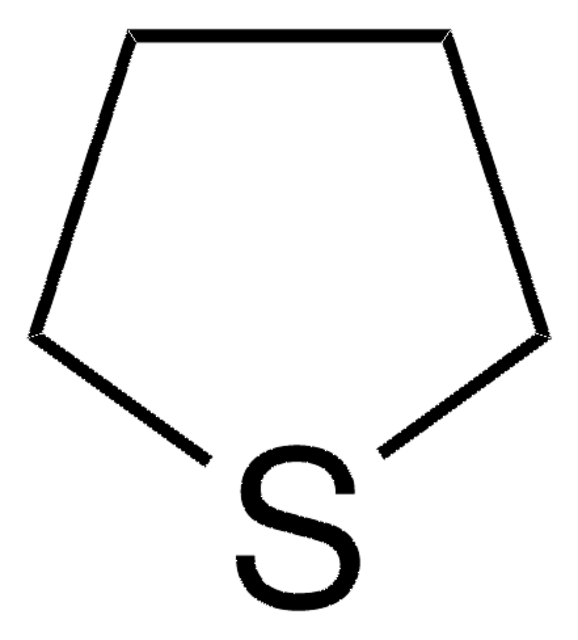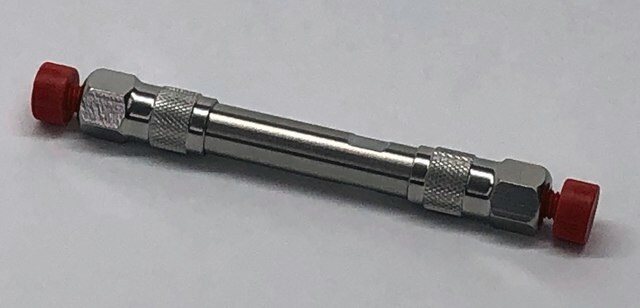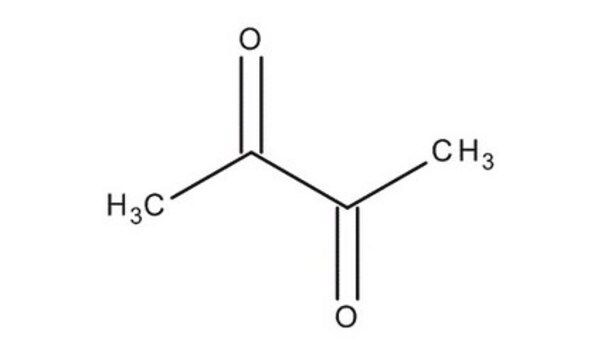8.20833
Dimethyl sulfide
for synthesis
Sinonimo/i:
Dimethyl sulfide, Methyl sulfide
About This Item
Prodotti consigliati
Tensione di vapore
530 hPa ( 25 °C)
Livello qualitativo
Saggio
≥99.0% (GC)
Stato
liquid
Temp. autoaccensione
205 °C
Potenza
535 mg/kg LD50, oral (Rat)
>5000 mg/kg LD50, skin (Rabbit)
Limite di esplosione
2.2-19.7 % (v/v)
P. ebollizione
37 °C/1013 hPa
Punto di fusione
-98 °C
Temp. transizione
flash point <-30 °C
Solubilità
7.28 g/L
Densità
0.85 g/cm3 at 20 °C
Temperatura di conservazione
2-8°C
Stringa SMILE
S(C)C
InChI
1S/C2H6S/c1-3-2/h1-2H3
QMMFVYPAHWMCMS-UHFFFAOYSA-N
Applicazioni
- Application of Synthetic Flavors in Zebrafish Rearing: The study details the effects of using synthetic flavors, including dimethyl sulfide, in the aquaculture of zebrafish, highlighting benefits in fish development and welfare. This application suggests potential for broader aquaculture practices (Conti et al., 2023).
- Impact of Sulfur Fertilizers on Potato Tuber Flavor: Research explored the combined application of phosphorus and sulfur fertilizers on the flavor of potato tubers, noting that sulfur compounds like dimethyl sulfide can influence agricultural product quality (Li et al., 2023).
- Two-Dimensional Platelets Assembly: A study demonstrated the use of small molecules including dimethyl sulfide for the living self-assembly of metastable and stable two-dimensional platelets, offering insights into novel materials engineering methods (Liao et al., 2023).
- Enhancement of Volatile Flavor Compounds: Investigation on the effect of instant pressure drop treatment on the volatile flavor compounds in whole highland barley flour. The study emphasizes the role of dimethyl sulfide in enhancing food flavors through advanced processing techniques (Chen et al., 2023).
- Role in Marine Biogeochemical Cycles: This research highlighted the contribution of fungi to the increased production of dimethylsulfoniopropionate (DMSP), a precursor to dimethyl sulfide, in kelp ecosystems, underscoring its importance in marine biogeochemical cycles (Perkins et al., 2023).
Risultati analitici
Density (d 20 °C/ 4 °C): 0.847 - 0.849
Identity (IR): passes test
Avvertenze
Danger
Indicazioni di pericolo
Consigli di prudenza
Classi di pericolo
Flam. Liq. 2
Codice della classe di stoccaggio
3 - Flammable liquids
Classe di pericolosità dell'acqua (WGK)
WGK 1
Punto d’infiammabilità (°F)
-32.8 °F - closed cup
Punto d’infiammabilità (°C)
-36 °C - closed cup
Certificati d'analisi (COA)
Cerca il Certificati d'analisi (COA) digitando il numero di lotto/batch corrispondente. I numeri di lotto o di batch sono stampati sull'etichetta dei prodotti dopo la parola ‘Lotto’ o ‘Batch’.
Possiedi già questo prodotto?
I documenti relativi ai prodotti acquistati recentemente sono disponibili nell’Archivio dei documenti.
Il team dei nostri ricercatori vanta grande esperienza in tutte le aree della ricerca quali Life Science, scienza dei materiali, sintesi chimica, cromatografia, discipline analitiche, ecc..
Contatta l'Assistenza Tecnica.





